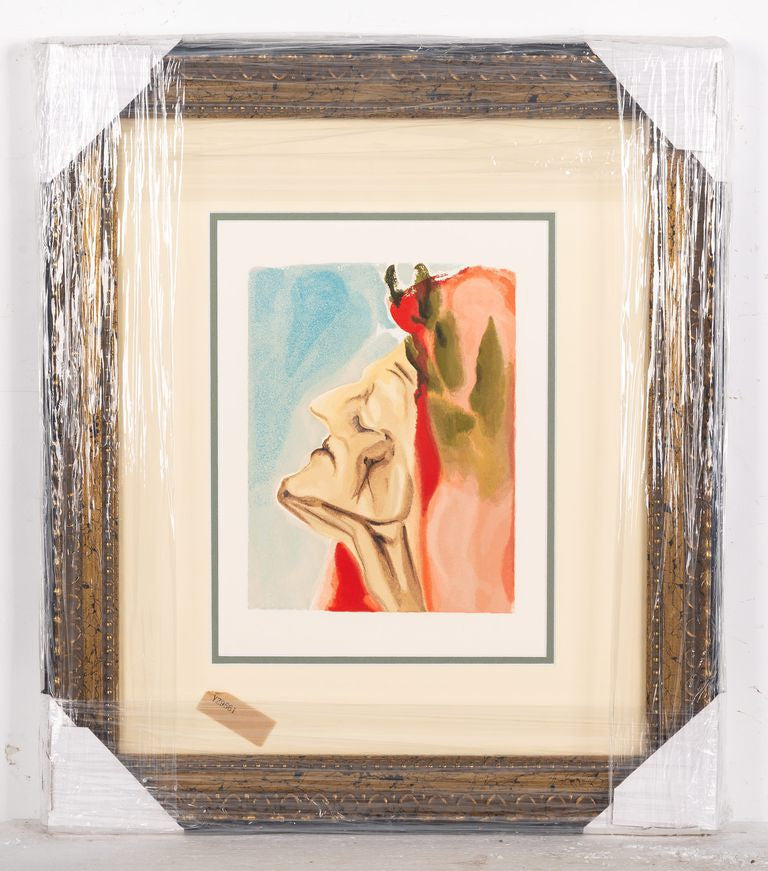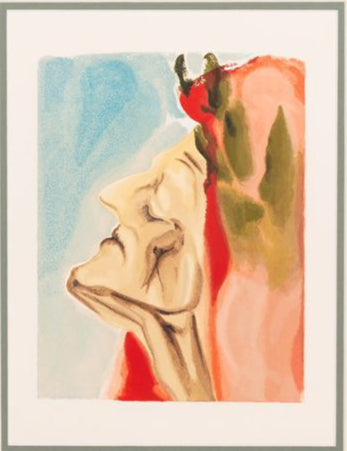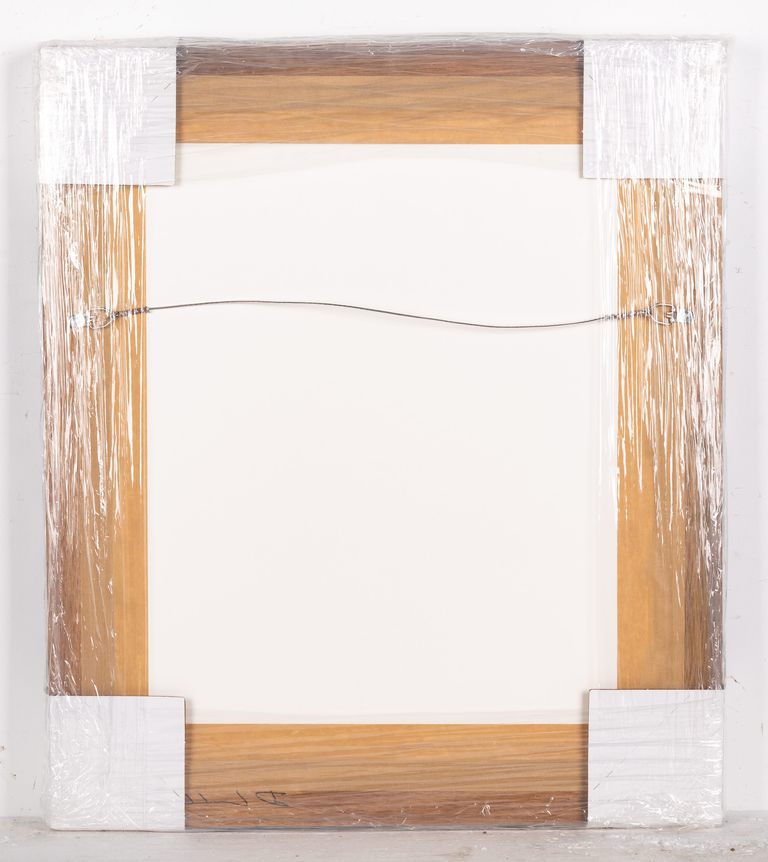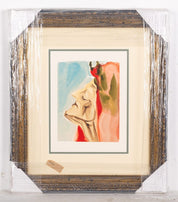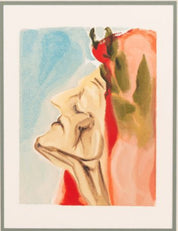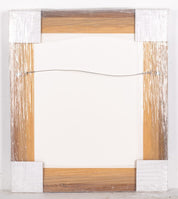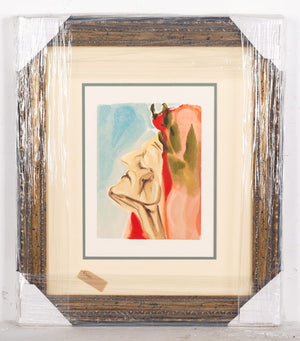Salvador Dalí - "Paradise 7"
Salvador Dalí
Artwork Details
Artwork Description
Salvador Dalí - "Paradise 7"
Original Color Woodcut on B.F.K. Rives Paper
Artist:
Salvador Dalí (Spanish, 1904-1989)
Title:
"Paradise 7"
Medium:
Original Color Woodcut on B.F.K. Rives Paper
Dimensions:
- Unframed: 13" x 10"
- Framed: 22" x 18"
Edition Details:
- Signature: Unsigned
- Certificate of Authenticity: Included
- Reference Number: 16707
Condition Report:
- Overall Condition: Good
- Framing: Custom framed for preservation and display
- Paper Quality: High-quality B.F.K. Rives paper, known for its durability and fine texture
Description & Artistic Significance
"Paradise 7" is an original color woodcut by Salvador Dalí, part of his Divine Comedy series, which illustrates Dante Alighieri’s epic journey through Inferno (Hell), Purgatorio (Purgatory), and Paradiso (Paradise).
Commissioned in 1950 to commemorate the 700th anniversary of Dante’s birth, Dalí dedicated years to creating 100 watercolor illustrations, which were then meticulously converted into woodcut prints by skilled artisans. The result was a remarkable fusion of Renaissance literature and Surrealist art, making this one of the most ambitious literary-artistic projects of the 20th century.
"Paradise 7" and The Divine Comedy Series
As part of the Paradiso (Paradise) section, this piece depicts Dante’s ascent through the celestial spheres, guided by Beatrice toward the ultimate vision of divine enlightenment. Unlike the turbulent and haunting imagery of Inferno or the transitional tones of Purgatory, Dalí’s Paradise illustrations use luminous colors, fluid forms, and dreamlike compositions to capture the joy and transcendence of the afterlife.
In "Paradise 7", the viewer is transported into a world of light, harmony, and celestial energy, reflecting Dante’s vision of spiritual enlightenment. Dalí’s use of soft pastels, delicate figures, and dynamic movement creates an ethereal atmosphere, reinforcing the metaphysical and philosophical themes of Paradiso.
Historical & Artistic Context
Dalí and Surrealism
As one of the most famous Surrealists, Dalí was known for blurring the boundaries between dreams and reality. While his earlier works were marked by bizarre landscapes and melting clocks (The Persistence of Memory, 1931), his Divine Comedy series showcases a more refined, mystical approach, influenced by Renaissance art, religious symbolism, and his fascination with metaphysics.
Woodcut Printing Technique
Dalí’s Divine Comedy series was painstakingly produced using the woodcut method, an ancient technique requiring master craftsmanship. Each image was separated into multiple woodblocks, with up to 37 different hand-carved blocks per print, ensuring a rich, layered effect with deep color saturation. This labor-intensive process makes these prints highly collectible and historically significant.
Investment & Collectibility
This original color woodcut is a valuable addition to any art collection, offering both aesthetic beauty and historical depth. Dalí’s Divine Comedy series remains one of his most sought-after print collections, appreciated by art collectors, scholars, and literature enthusiasts alike.

